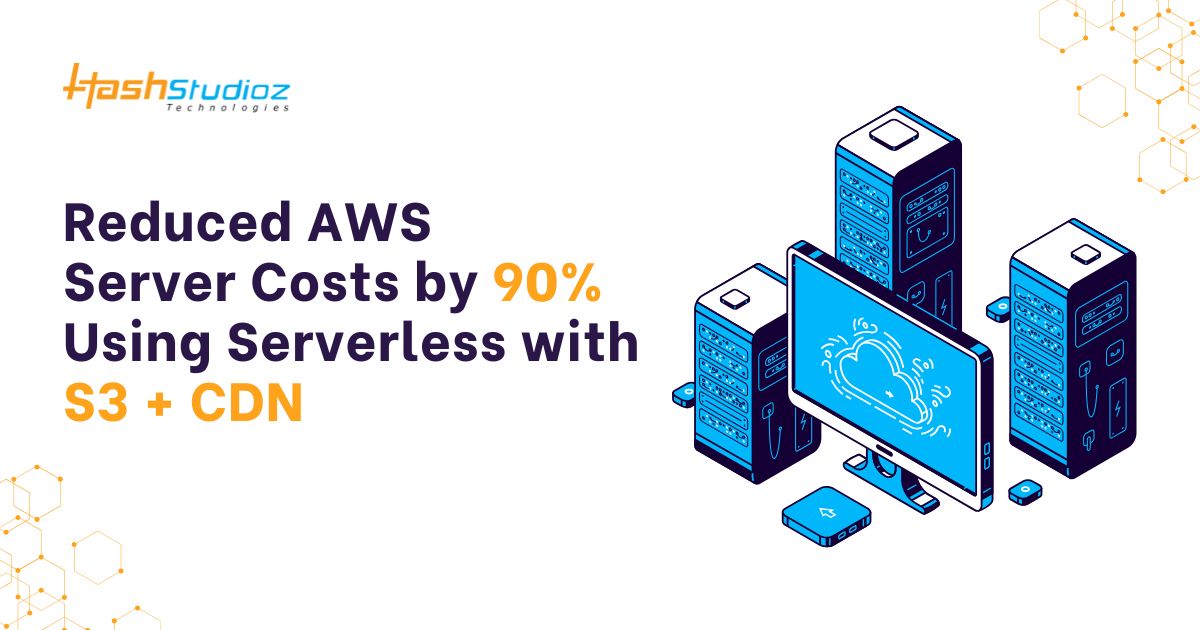Our daily to-do app serves over 200,000 active monthly users. Not long ago, we were spending close to $2,000/month on backend infrastructure—just to serve fairly predictable task data. To reduce AWS server costs, we explored a more efficient architecture that could handle high traffic without high expenses.
Now? We’ve cut that cost to almost zero.
This post explains how we did it by moving from a dynamic backend/database model to a static, pre-generated data model served through Amazon S3 and CloudFront.
Table of Contents
The Old Setup: Traditional and Pricey
Here’s what our original architecture looked like:
- A Node.js REST API
- Hosted on cloud servers AWS EC2.
- Backed by a relational database PostgreSQL.
Each user interaction (fetching tasks, updating status) hit the API/database
With 200K+ users, we were handling millions of monthly API calls, most of them just to read the same base data.
The result? A ballooning cloud bill, mostly from:
- High server uptime and auto-scaling
- Database read/write operations
- Monitoring, backups, and redundancy
The Insight That Changed Everything
We asked: “Do users really need dynamic data every time they open the app?”
Turns out: No.
Here’s why:
- The app offers a pre planned set of daily tasks for users.
- Only a small percentage of users personalize their to-dos.
- Most users just read and write data.
That meant we could treat most of the experience like a static.
Also Read: How to Set Up a Cloud Infrastructure: A Step-by-Step Guide
The New Setup: Static Data via S3 + CDN
We switched to a simple, scalable model:
- Pre-generate task data by date as JSON (e.g., 2025-05-17/202401010001.json)
- Store all task files in S3
- Serve them globally through CloudFront with aggressive caching
- Frontend fetches data directly from the CDN
- For logged-in users or custom tasks: store lightweight state in local storage or sync via a minimal backend
Benefits:
- Zero load on servers for read operations
- Sub-millisecond response times via CDN edge nodes
- No backend scaling worries during user spikes
We now fetch directly: GET https://cdn.ourapp.com/data/2025-05-17/202401010001.json
Lessons Learned
- Not everything needs to be dynamic. Even interactive apps can benefit from static delivery.
- S3 + CloudFront is incredibly powerful for high-read workloads.
- The frontend is underrated. With preplanned data and smart caching, it can do a lot more.
- Cost != performance. In this case, the cheaper solution was also faster and more reliable.
Want to Optimize Your Cloud Infrastructure?
We’ve learned firsthand how serverless architectures and static data models can reduce costs and improve performance. But there’s a lot more to cloud infrastructure optimization than just cutting costs.
At HashStudioz, we specialize in Cloud Infrastructure Management Services, helping businesses design and implement robust cloud environments that scale with their needs.
If you’re looking to optimize your infrastructure, reduce operational overhead, and make your app more cost-effective, our expert team is here to help!
Contact Us Today to Learn More about Our Cloud Infrastructure Management Services
Final Thoughts
If you’re building a content-driven or predictable-data app, ask yourself:
“Does this really need to be dynamic?”
For us, the answer changed everything.
Sometimes, the best backend… is no backend at all.
By making the move to a serverless architecture with S3 and CDN, we were able to significantly reduce our server costs while delivering a faster, more reliable service to our users. The power of static delivery for predictable data can’t be overstated.
And if you need help with cloud infrastructure management, HashStudioz is here to ensure you’re not just saving costs, but also maximizing performance.

